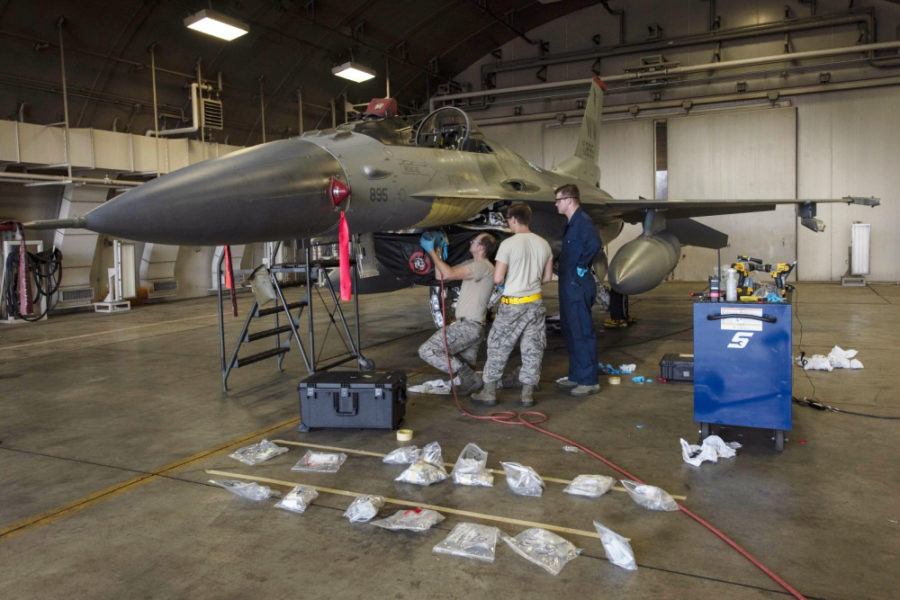The Air Force is losing ground on readiness because it has too many old airplanes to keep operating, Vice Chief of Staff Gen. David W. Allvin told the House Armed Services readiness panel.
The Air Force’s $15.4 billion weapon systems sustainment request in 2022 is “on a par” with the 2021 request, but Allvin told legislators the “funding is not keeping pace with the escalating cost.” Up to 2021, he said, “requirements grew by more than $800 million, as we brought on new aircraft without retiring legacy platforms.”
The 2022 request looks to retire 201 aircraft and buy 91 new ones, for a net decrease of 110 airplanes, in an effort to “affordably balance the weapon systems sustainment accounts,” Allvin said. The Air Force would use the savings to upgrade the remaining gear or develop new systems that are more relevant to what Allvin called “the future fight.”
He also said the budget makes “several key adjustments to operational deployment constructs, to ensure our forces are optimally postured to build and sustain readiness for peer competition, including re-aligning the Air Force’s force generation model.”
The readiness accounts also support more dynamic force employment taskings and “more high-end training for peer competition,” he told the subcommittee.
If allowed to make the requested changes, Allvin said the service can accelerate “the readiness recovery this committee makes possible.”
Asked what the Air Force is doing to combat its chronic pilot shortage, he said the goal is to bring on 1,500 new pilots per year, and he itemized a number of “irons in the fire” that Air Education and Training Command is exploring to accelerate pilot production. These include a fast-track training program for qualified civilian pilots to become USAF pilots; skipping the fixed-wing portion of training for helicopter pilots and sending them directly to rotary-wing instruction; shifting to civilian instructors for simulator training and allowing them to conduct that training virtually and remotely, thus putting more line pilots back in operational cockpits.
Putting all those together—and if they pay off as expected—he said, “the Air Force can really produce about one additional base’s worth” of pilots per year, “and our target for knowing that will be by FY ’24, but we want to make sure we’re assessing each of these and where we might want to put more emphasis.”
Allvin also said the Air Force will put more effort into managing pilots “throughout their career, so the bathtub [the cohort shortage] doesn’t just move from company grade officers to field grade officers. We need to manage them through their entire life cycle, which will be a challenge going forward.”
He also confirmed that USAF plans to keep with its “three depot strategy” and is putting money into programs to grow new civilian talent for depots through scholarships and journeyman programs. The depots are also being funded for new technologies such as 3-D, or additive manufacturing, to make a “graceful transition” to retirement for aircraft suffering from vanishing vendor syndrome. There’s $100 million in the budget being applied to sustainment technologies, Allvin said.
